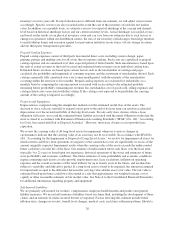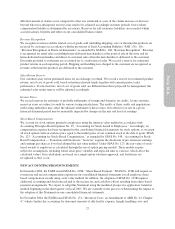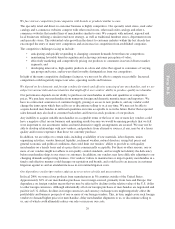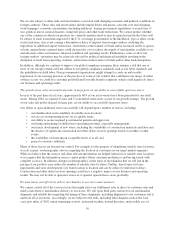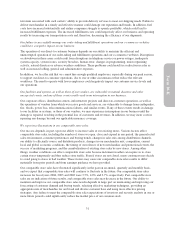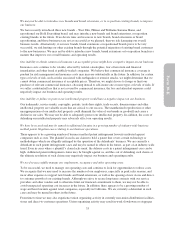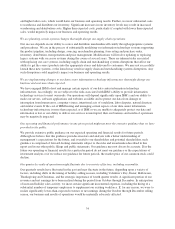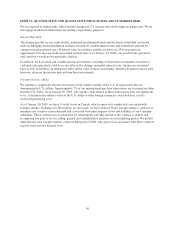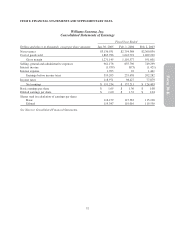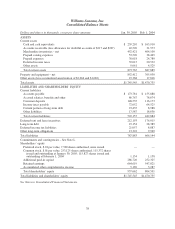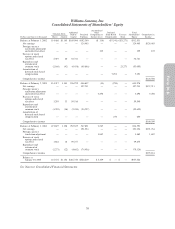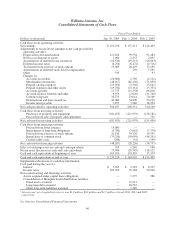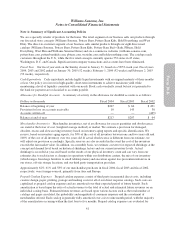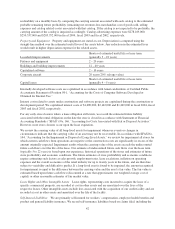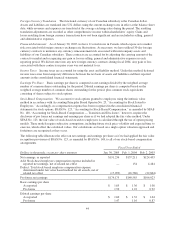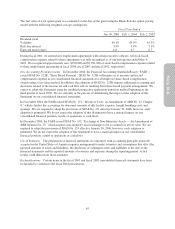Pottery Barn 2004 Annual Report Download - page 42
Download and view the complete annual report
Please find page 42 of the 2004 Pottery Barn annual report below. You can navigate through the pages in the report by either clicking on the pages listed below, or by using the keyword search tool below to find specific information within the annual report.
We may require external funding sources for operating funds.
We regularly review and evaluate our liquidity and capital needs. We currently believe that our available cash,
cash equivalents, cash flow from operations and cash available under our existing credit facilities will be
sufficient to finance our operations and expected capital requirements for at least the next twelve months.
However, as we continue to grow, we might experience peak periods for our cash needs during the course of our
fiscal year, and we might need additional external funding to support our operations. Although we believe we
would have access to additional debt and/or capital market funding if needed, such funds may not be available to
us on acceptable terms. If the cost of such funds is greater than expected, it could adversely affect our expenses
and our operating results.
We are exposed to potential risks from recent legislation requiring companies to evaluate controls under Section
404 of the Sarbanes-Oxley Act of 2002.
We have evaluated our internal controls in order to allow management to report on, and our registered
independent public accounting firm to attest to, our internal controls, as required by Section 404 of the Sarbanes-
Oxley Act of 2002. We have performed the system and process evaluation and testing required in an effort to
comply with the management certification and auditor attestation requirements of Section 404. As a result, we
have incurred significant additional expenses and a diversion of management’s time. If we are not able to
continue to meet the requirements of Section 404 in a timely manner or with adequate compliance, we might be
required to disclose material weaknesses if they develop or are uncovered and we may be subject to sanctions or
investigation by regulatory authorities, such as the SEC or the NYSE. Any such action could negatively impact
the financial market’s perception of us and our business.
Changes to existing accounting rules or regulations may adversely affect our results of operations.
Changes to existing accounting rules or regulations may impact our future results of operations. For example, on
December 16, 2004, the FASB issued SFAS No. 123R, “Share Based Payment,” which will require us, starting in
the third quarter of fiscal year 2005, to measure and record compensation expense for all employee share-based
compensation awards using a fair value method. Other new accounting rules or regulations and varying
interpretations of existing accounting rules or regulations have occurred and may occur in the future. Future
changes to accounting rules or regulations or the questioning of current accounting practices, may adversely
affect our results of operations.
Changes to estimates related to our property and equipment, or results that are lower than our current estimates
at certain store locations, may cause us to incur impairment charges.
We make certain estimates and projections in connection with impairment analyses for certain of our store
locations in accordance with SFAS No. 144 “Accounting for the Impairment or Disposal of Long-Lived Assets.”
We review for impairment all stores for which current cash flows from operations are negative or the
construction costs are significantly in excess of the amount originally expected. Impairment results when the
carrying value of the asset exceeds the undiscounted future cash flows over the life of the lease. These
calculations require us to make a number of estimates and projections of future results, often up to twenty years
into the future. If these estimates or projections change or prove incorrect, we may be required to take
impairment charges on certain of these store locations. If these impairment charges are significant, our results of
operations would be adversely affected.
35
Form 10-K



